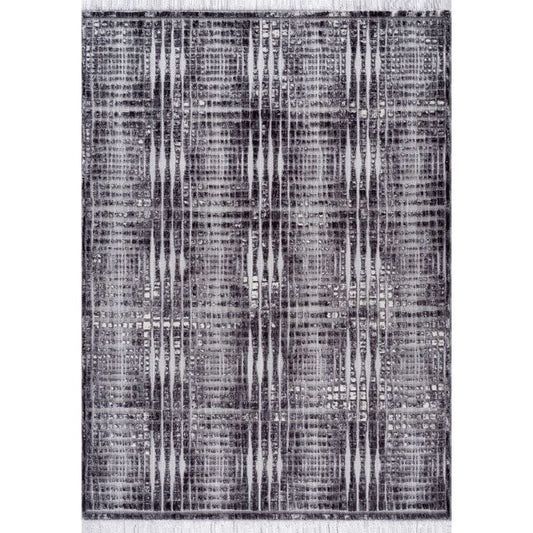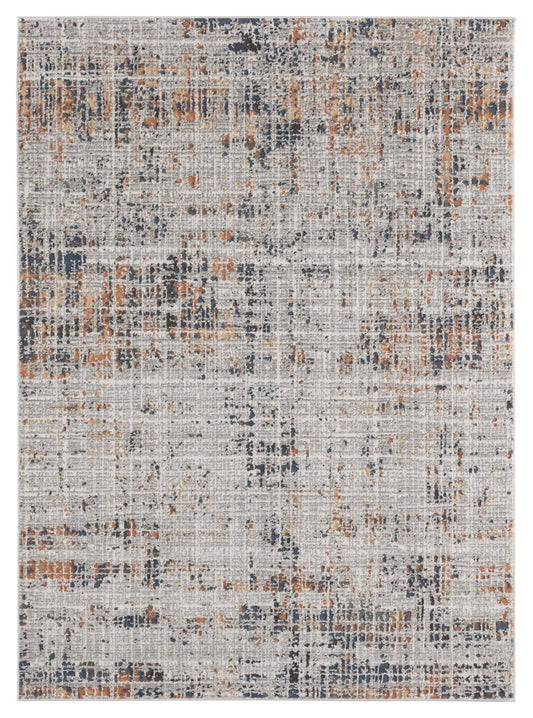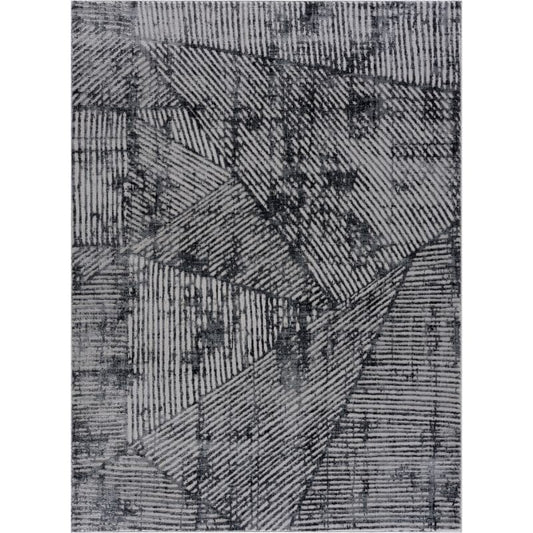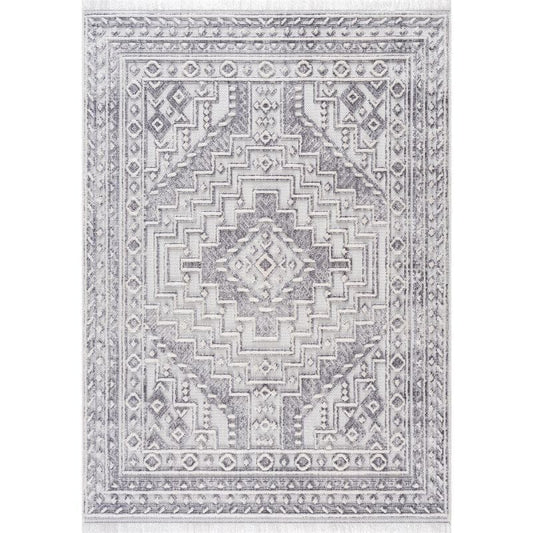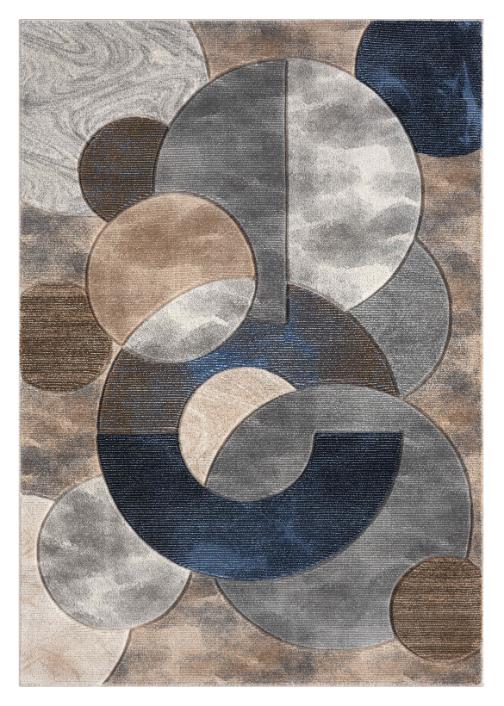Determining the appropriate size of the rug for the dining area is crucial when arranging the optimal interior. The right rug does not only function as a complement to the furniture piece but it also offers cushioning and floor covering.
A rug that sits well in terms of the size of the dining room and the arrangement of furniture such as chairs and tables improves the looks of the room and makes it easily welcoming. But it is rather difficult to choose the perfect size taking into account several fundamental factors.
From the length and width of the dining table to the chair sliding part, this post will guide you in choosing the right dining room rug.
Why Is Choosing the Right Rug Size Important?
Dining room rug size selection is not limited to its appearance alone; it determines the usability of the dining area too. This makes it possible to avoid some problems, for example, chairs getting tangled on the edge of the rug, as well as bringing out the beauty of the room. Let’s discuss why it is essential to search for the best size for the dress both for aesthetic and practical purposes.
Visual Balance and Proportion
The proper size of the rug results in the right proportions in the dining room. If the rug is small, the furniture will look too large and if the rug is large, it will look like a colossal giant in the room. Measuring the rug to be in proportion to both the dining table and the size of the room makes for a more harmonious setting.
Functionality and Comfort
The right size of the rug makes sure that all the dining chairs sit on the rug and do not get dragged off the rug when being pulled. In addition, this eliminates any possibility of tripping over the dining table rug while creating comfort for diners in that chairs can easily glide without getting stuck at the edge of the rug. Extra thickness on the ground also makes the environment more comfortable while dining.
Floor Protection
Apart from enhancing the looks of the room and possessing practical purposes, a proper-sized rug provides a shield for your floors. When there is no rug at the center, frequent chair sliding can eventually tear the flooring such as hardwood, tile or even other types of floorings. An appropriate rug will protect the floor from wearing off hence extending the useful life of the floors.
How Can You Measure Your Dining Room for a Rug?
Measuring your dining room for a rug is crucial to ensure that it fits both your table and the space comfortably. By carefully measuring the area, you can avoid purchasing a rug that's either too small or excessively large, helping to create a dining environment that looks and feels just right.
- Measure Your Dining Table: First, let’s start by measuring the dimensions of your dining table. Allow an additional 24 to 30 inches on all sides to cater for the chair being pulled out while the occupants remain on the rug area.
- Consider the Shape of Your Table and Rug: The size and shape of the dining table also guide the shape of the rug on the floor where the table is placed. Rectangular tables well complement rectangular rugs, and round tables complement round dining table rugs.
- Use Painter’s Tape to Visualize the Rug’s Size: To determine the size of the rug before buying, you can outline using painter’s tape on the dining room floor. This trick helps to envision the size of the rug and also introduces an option to make some measurement adjustments.
What Rug Sizes Fit Best with Different Dining Tables?
The shape and size of your dining table are key factors in determinin g the ideal rug size. Each table type must be accompanied by the correct size of the rug so that it fits the table and does not look disproportionate. Below are some guidelines on how one should choose the right rug size for your dining table depending on the shape.
|
Dining Table Size (ft) |
Rug Size (ft) |
|
4x4 |
5x5 |
|
4x6 |
5x8 |
|
5x5 |
6x6 |
|
5x8 |
6x9 |
|
6x6 |
7x7 |
|
6x8 |
8x10 |
|
6x10 |
8x12 |
|
8x8 |
9x12 |
|
8x10 |
9x12 |
Dining Room Rugs for Rectangular Tables
Rectangular dining tables are the most common shape, and choosing the right rug size is essential for maintaining balance in your dining space. For smaller rectangular tables that seat 4 to 6 people, 6x9 dining room rugs are a great fit, providing enough room for chairs to remain on the rug when pulled out. For larger dining tables seating 6 to 8 people, dining room rugs 8x10 are ideal, covering a more generous area while anchoring the table and chairs. If you have an even bigger table seating 8 to 10 guests, consider a dining room rug 9x12, which offers ample space to define the dining area without overwhelming the room
Dining Room Rugs for Round Tables
Round dining tables create a cozy, intimate feel, and choosing the right rug size enhances this atmosphere. For smaller round tables seating 2 to 4 people, dining room rugs 4x6 work perfectly, offering a compact yet comfortable area under the table and chairs. If you have a larger round table seating 4 to 6 people, consider using dining room rugs 5x8. These rugs provide enough coverage to ensure chairs stay on the rug when pulled out, maintaining a cohesive look and preventing damage to your floors.
Looking for round rugs for the dining room? Visit Rug Gallery to browse our beautiful selection that adds elegance and warmth to your dining area.
Dining Room Rugs for Square Tables
Square dining tables offer a unique and balanced shape, and the right rug will help highlight this symmetry. For smaller square tables seating 4 people, dining room rugs 5x8 are a popular option, offering a snug fit that keeps chairs well within the rug’s edges. For larger square tables that seat 6 people, dining room rugs 7x10 provide more space, ensuring the entire dining setup remains grounded while still allowing for easy chair movement.
Dining Room Rugs for Oval Tables
Oval dining tables add a touch of elegance to dining spaces, and pairing them with the right rug ensures harmony in the design. For oval tables, round rugs can offer a stylish and unconventional contrast. A round rug under an oval table helps to soften the edges while still providing ample coverage for chairs and enhancing the overall aesthetic of the dining area.
Which Materials Are Best for Dining Room Rugs?
When selecting a rug for your dining room, the material is just as important as the size and style. Dining rooms are high-traffic areas that experience spills, stains, and regular wear from chairs moving in and out. Choosing a rug made from durable, easy-to-clean materials ensures that it looks great and can withstand daily use demands.
Here are some of the best rug materials to consider for your dining room, each with its unique features.
- Wool: Wool rugs are a popular choice for dining rooms due to their durability, softness, and natural stain resistance. Wool fibers are resilient, bouncing back from heavy foot traffic and chair movement.
- Polypropylene: Polypropylene rugs are synthetic, offering affordability and durability. These rugs are highly stain-resistant and easy to clean, making them ideal for families or those who entertain frequently.
- Jute: Jute rugs are made from natural fibers, giving them a textured, earthy appearance that adds warmth to dining spaces. While not as soft as wool, jute is highly durable and perfect for adding a rustic touch to your dining room.
- Cotton: Cotton rugs are lightweight, affordable, and easy to clean. They often come in many patterns and colors, allowing for more design flexibility.
- Silk: Silk rugs offer a luxurious, elegant touch with a soft, smooth texture and a beautiful sheen. While not as durable as wool or synthetic fibers, silk rugs can add sophistication to formal dining rooms.
- Bamboo: These rugs offer a natural, earthy aesthetic to dining rooms. Bamboo is resistant to moisture, making it easy to clean and maintain.
- Seagrass: Seagrass rugs are made from natural fibers that are non-porous, making them resistant to stains and easy to clean. Their natural texture adds a rustic, coastal feel to dining rooms, and they are exceptionally durable.
- Leather: Leather rugs, often made from cowhide or strips of woven leather, add a unique and chic aesthetic to dining rooms.
- Sisal: Sisal rugs are highly absorbent, so spills should be cleaned immediately to avoid staining. It has a rougher texture than jute but is very strong, making it ideal for high-traffic areas like dining rooms.
Revitalize your dining room with our stunning dining room area rugs. Visit Rug Gallery to explore a variety of sizes and styles that suit your taste!
Where Should You Place Your Dining Room Rug?
It is important to consider where to place your dining room rug to achieve a proper design for the dining room. The location of furniture also plays a critical role in enhancing the dining area and more importantly; it covers the floor from destruction by furniture legs. The proper location of the rug makes a big difference in the overall appearance and usability of a dining room, irrespective of the size or style of the room.
Center the Rug Under the Dining Table
The key rule with regard to the positioning of dining room rugs is that the rug should be centrally placed under the dining table. The rug itself should hang over the table on all four sides so that chairs stay on the rug even when they are moved out from the table. This does not only secure the dining area but also ensures that the chairs do not scrape the floor damaging your floor or the rug as well.
Extend the Rug Beyond the Table and Chairs
One mistake to avoid is to select a rug that is too small and it ends up leaving some chair legs dangerously close to the rug edges. In terms of positioning, they should be placed 24 to 30 inches beyond the table at all sides. This way there is enough room for guests to pull the chairs out while they remain on the rug, giving a better aesthetic and practical look.
Align with the Room’s Layout
The dining room rug should complement the overall layout of the room. In rectangular dining rooms, opt for a rug that follows the shape of the room and table to maintain balance. In square or open-concept rooms, ensure the rug defines the dining space without clashing with adjacent areas. The rug should fit comfortably within the space, leaving some floor around the room's perimeter to avoid a cramped look.
Consider Proximity to Other Furniture
The rug also should not hinder another part of furniture like the buffet or sideboard, if your dining room is a part of other furniture. The rug should not lie under this furniture unless it covers the whole area of the floor in a room.
Ensure that the rug below the dining set is just limited to this area to avoid a mess in the arrangement. Enhance your dining space with a beautiful rug under the dining table.
Want to take your dining area up a notch with a nice rug? At Rug Gallery, we showcase a diverse collection of luxurious dining room rugs most suitable for your dining area by size, fabric, and pattern. If you require a tough runner for your living area or a stylish rug to grace your dining room, you will find it here. Come to our store today to view our catalog as well as let our qualified personnel assist you acquire your preferred rug.
What Are Common Mistakes to Avoid When Choosing a Dining Room Rug?
Selecting the perfect rug for your dining room can be tricky, especially with the many factors to consider. However, some common mistakes can affect both the functionality and appearance of your dining space. Avoiding these errors will help you choose a rug that fits your room’s layout, style, and practical needs.
Let’s explore some common pitfalls to watch out for.
- Choosing the Wrong Size: One of the biggest mistakes people make is choosing a rug that’s either too small or too large. A small rug can make your dining area feel disjointed, while a large rug may overwhelm the space.
- Overlooking Material Durability: The dining room is a high-traffic area prone to spills and stains, making it crucial to choose a rug material that can withstand wear and tear.
- Neglecting the Room’s Layout and Shape: Failing to match the rug shape to your dining table can create an unbalanced look. For instance, pairing a round table with a rectangular rug might look awkward.
- Ignoring Rug Padding: A rug pad also adds cushioning and extends the rug's life. Without it, the rug may slip, bunch, or wear out more quickly.
- Choosing a High-Pile Rug: The higher pile makes it difficult to move chairs and can trap crumbs and dirt, making cleaning harder. Instead, opt for a low-pile rug that allows chairs to slide smoothly and is easier to maintain.
Conclusion
In choosing the size of your rug for the dining area, proper decision is important in setting the nice ambiance and appearance of the place. To achieve this, look for the dimensions of your dining table and the size of the room so that you can establish the right dining table rug size that will complement the room and table. Searching for the best rugs for your dining room? Ensure that the rug shape is suitable for your table; whether rectangular, round, square, or oval, also ensure it blends with the other furniture within the space. The correct selection of a rug becomes a perfect addition to the dining area decor and an invitation to a warm family meal or hosting friends.

